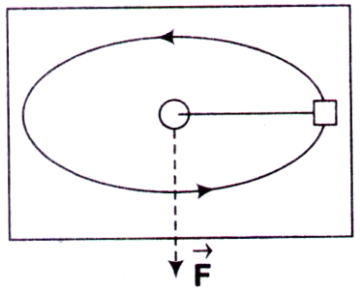A heavy symmetrical top is rotating about its own axis of symmetry (Z-axis). If $${I_1},\,{I_2}$$ and $${I_3}$$ are the principal moments of inertia along X, Y and Z axes respectively then
A. $${I_2} = {I_3},\,{I_1} \ne {I_2}$$
B. $${I_1} = {I_3},\,{I_1} \ne {I_2}$$
C. $${I_1} = {I_2},\,{I_1} \ne {I_3}$$
D. $${I_1} \ne {I_2} \ne {I_3}$$
Answer: Option C
A. increases till mass falls into hole
B. decreases till mass falls into hole
C. remains constant
D. becomes zero at radius r1, where 0 < r1 < r0
A. $$\frac{c}{3}$$
B. $$\frac{{\sqrt 2 }}{3}c$$
C. $$\frac{c}{2}$$
D. $$\frac{{\sqrt 3 }}{2}c$$
The Hamiltonian corresponding to the Lagrangian $$L = a{{\dot x}^2} + b{{\dot y}^2} - kxy$$ is
A. $$\frac{{{p_x}^2}}{{2a}} + \frac{{{p_y}^2}}{{2b}} + kxy$$
B. $$\frac{{{p_x}^2}}{{4a}} + \frac{{{p_y}^2}}{{4b}} - kxy$$
C. $$\frac{{{p_x}^2}}{{4a}} + \frac{{{p_y}^2}}{{4b}} + kxy$$
D. $$\frac{{{p_x}^2 + {p_y}^2}}{{4ab}} + kxy$$
A. circular
B. elliptical
C. parabolic
D. hyperbolic


Join The Discussion